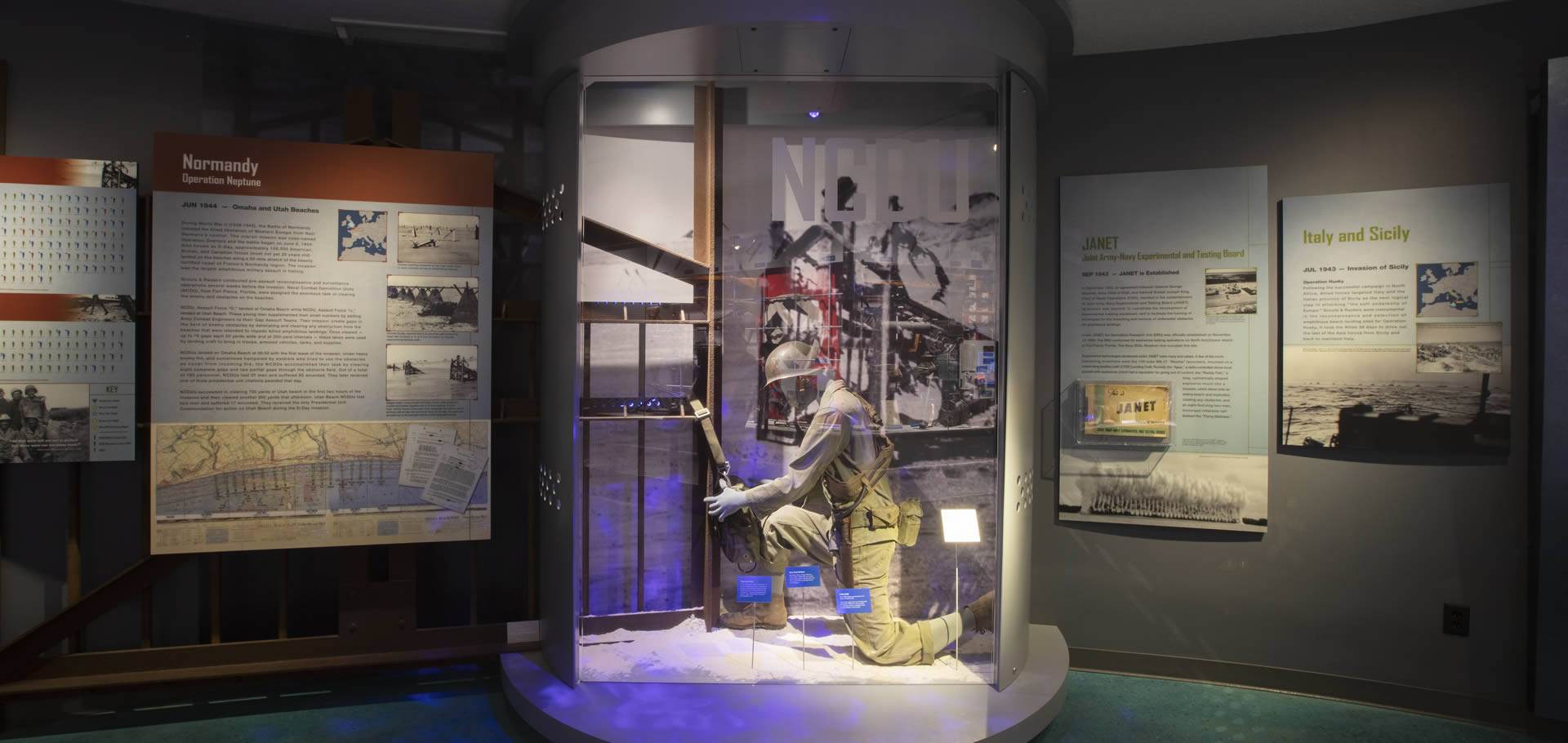
Into the Surf with Fire: NCDU Training and the Hagensen Pack at D-Day
In the spring of 1944, while most Allied planners were focused on the logistics across the English Channel, a select group of American sailors trained for something more immediate, blowing apart Hitler’s Atlantic Wall. These men were part of the Naval Combat Demolition Units (NCDUs), a new combat force designed to dismantle the German beach defenses before the D-Day invasion. Equipped with little more than swim trunks, Ka-Bars, and satchel charges, they would be among the first to land, and the first to bleed on the shores of Normandy.
The genesis of the NCDUs dates back to 1943, under the leadership of Lieutenant Commander Draper Kauffman, often referred to as the “Father of Naval Combat Demolition.” At the Amphibious Training Base in Fort Pierce, Florida, Kauffman developed a rigorous training regimen that blended Navy diving, explosives handling, and combat swimming; these hallmarks would later influence the formation of the SEALs. The men trained in the surf zone, learned to handle high explosives under pressure, and rehearsed beach reconnaissance under simulated fire. Many were recruited from the Navy’s Seabee units, which were already skilled in construction and demolition work, but now tasked with performing it under fire.1
Central to their demolition kit was the Hagensen Pack, named after Lieutenant Carl Hagensen, who helped develop it. This compact satchel charge was uniquely designed for rapid underwater deployment. Roughly the size of a lunchbox, it contained approximately 2.5 pounds of high explosive and could be secured to steel or concrete obstacles with a special adhesive or clamp.2
The Hagensen Pack was revolutionary not because of its destructive power, but because of its portability and ease of use. For the NCDUs, speed was life. On D-Day, every second spent attaching a charge to a Belgian gate or hedgehog was a second closer to being shot.
The training conveyed this urgency. At Slapton Sands in England, the NCDUs practiced under live-fire conditions, sharpening their skills in timing fuses, calculating explosive force, and executing quick egress from the surf zone.
Time and again, they practiced placing charges on mock obstacles, sprinting back to a safe distance, and diving for cover as debris tore through the air.
When June 6, 1944, broke over the Normandy coast, NCDUs landed in the first wave at both Utah and Omaha Beaches. Their orders were straightforward yet ruthless: clear 50-yard gaps in the German defenses before the follow-on infantry arrived. At Omaha, NCDU teams suffered devastating losses, over 50 percent killed or wounded in the first few minutes of the assault.3 Despite the chaos, they managed to breach crucial lanes through obstacles such as log ramps, steel hedgehogs, and Belgian gates. Many of those charges were Hagensen Packs, expertly placed and detonated under fire.
The success of the NCDUs was not measured by the territory taken, but by the passages made possible. Without those cleared lanes, tanks and landing craft would have piled up on the beach under enemy fire, dooming the invasion. Admiral Ernest J. King later noted that the demolition units “played an indispensable part in the success of the Normandy landings.”4
The legacy of the Hagensen Pack, and of the men who wielded it, is etched into the sand of every beach they cleared. Though the UDTs and later the SEALs would evolve and modernize, the raw courage and technical skill required to place a charge under fire remains one of the most defining traits of Naval Special Warfare. They were not just combat engineers; they were the first to fight. And they brought their fire with them.
1Kevin Dockery, *Navy SEALs: The Complete History*, (New York: Berkley Caliber, 2004), 22–25.
2Bill McRaven, *Spec Ops: Case Studies in Special Operations Warfare*, (New York: Ballantine Books, 1995), 107.
3Naval History and Heritage Command, “Combat Demolitions Units,” accessed May 25, 2025, https://www.history.navy.mil/research/library/online-reading-room/title-list-alphabetically/d/d-day-the-normandy-invasion-combat-demolition-units.html.
4Ernest J. King, *U.S. Navy at War: Official Report Covering Combat Operations up to March 1, 1945*, (Washington, D.C.: U.S. Navy Department, 1945), 39.


